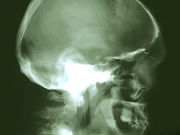Findings among patients with head and neck cancer undergoing definitive intensity modulated RT
FRIDAY, Sept. 30, 2016 (HealthDay News) — For patients with head and neck cancer (HNC), the duration of feeding tube placement is shorter for those who receive definitive intensity-modulated radiation therapy (IMRT) compared with those who receive three-dimensional radiation therapy (3DRT), according to a study published online Sept. 23 in Cancer.
Beth M. Beadle, M.D., Ph.D., from the University of Texas MD Anderson Cancer Center in Houston, and colleagues used the linked Surveillance, Epidemiology, and End Results-Medicare database to determine the cohort, demographics, and cancer-related variables for patients with HNC. Treatment details were analyzed using claims data.
The researchers identified 2,993 patients. Overall, 54.4 percent of patients had ever had a feeding tube placed at a median follow-up of 47 months, with a median duration of 277 days from feeding tube placement to removal. The rates of feeding tube placement were similar for patients who received IMRT and 3DRT (odds ratio, 1.10; P = 0.35); patients who received 3DRT had a feeding tube in place for significantly longer than those who received IMRT (1.18 times longer; P = 0.03). The difference was only seen for patients who received definitive RT; no significant difference was seen in feeding tube placement or duration for patients who underwent surgery and received adjuvant RT.
“These data suggest that there may be significant quality-of-life benefits to IMRT with respect to long-term swallowing function in patients with HNC,” the authors write.
Copyright © 2016 HealthDay. All rights reserved.








